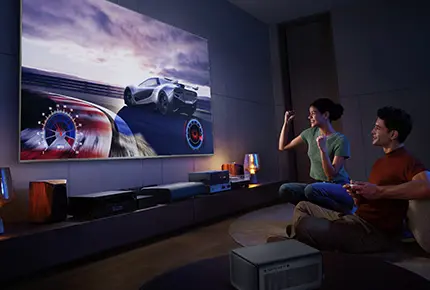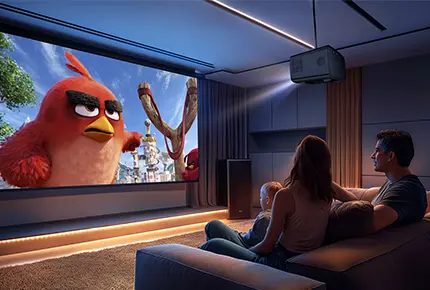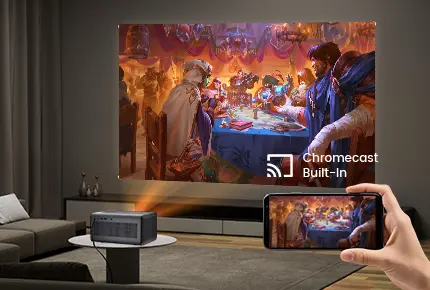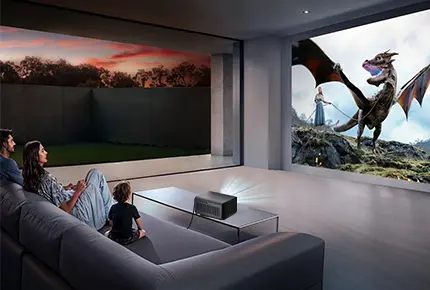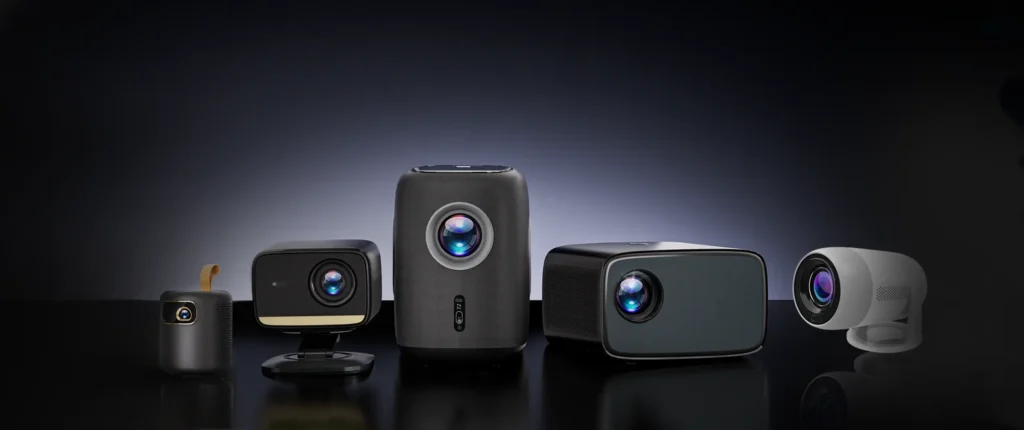
Projectors vs. TVs — which one is more eye-friendly?
This is a common concern when people compare projectors and TVs. So let’s break it down by looking at the key points below.
Image Formation Principle
Projectors use diffuse reflection imaging — the light is first projected onto a screen or wall, and then reflected into your eyes. This kind of light is similar to natural light, making it softer and reducing high-frequency flicker and direct light stimulation.
TVs, on the other hand, emit light directly (LED/LCD/OLED), meaning the light shines straight into your eyes. The high brightness and contrast, especially in high blue light environments, can cause eye strain and glare.
Viewing Distance and Screen Size
Projectors can project very large images (e.g., over 100 inches), requiring viewers to watch from a farther distance. This helps reduce eye focus strain.
TVs typically have smaller screens and are viewed from a closer distance. Prolonged close-up viewing can lead to ciliary muscle fatigue, increasing the risk of myopia.
View Koonew home entertainment projector with up to 200 inches image size: A-1363G
Blue Light and Light Source Technology
Projectors produce minimal blue light, especially those with laser or LED light sources. Some models can filter harmful blue light (415–455nm) through specific technologies.
Although many TVs feature low blue light modes or OLED panels, they still emit a certain amount of blue light due to the direct-emission nature of their light source.
Koonew ultra short throw 4K laser projector: HD50V
Ambient Light Adaptation
Projectors work best in dark environments, so it’s important to control ambient light and avoid excessive pupil dilation caused by total darkness.
TVs can be used in brighter rooms, but may suffer from screen glare under strong lighting. Adjusting brightness is necessary to avoid discomfort from reflections.
Usage Habits and Eye Protection
Both projectors and TVs require controlled usage time. It is recommended to follow the 20-20-20 rule: every 20–25 minutes, take a 20-second break to look at something 20 feet away.
However, projectors, with their larger image size and softer light, generally cause less eye fatigue from prolonged viewing. High-end projectors may also include smart eye protection features (e.g., ambient light adaptation, speckle-free technology), which further reduce eye strain.
Special Consideration: Children
Projectors are more eye-friendly for children due to long viewing distance and diffuse reflection light, which reduces the risk of retinal damage and helps prevent myopia.
Conclusion
Projectors are generally the more eye-friendly option, especially for long-duration viewing or for children. However, the best choice still depends on your specific environment and usage needs.
If eye protection is your top priority, choose a projector with low blue light certification.
If you need to use the device in bright environments or have high requirements for image quality, consider a high-brightness projector or an OLED TV with hardware-level blue light protection.
Regardless of your choice, maintaining healthy eye habits—such as controlling viewing time and adjusting ambient lighting—is essential for protecting your vision.
View Koonew high brightness projector: WX50X


